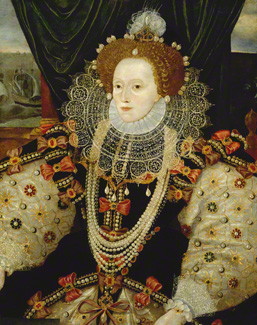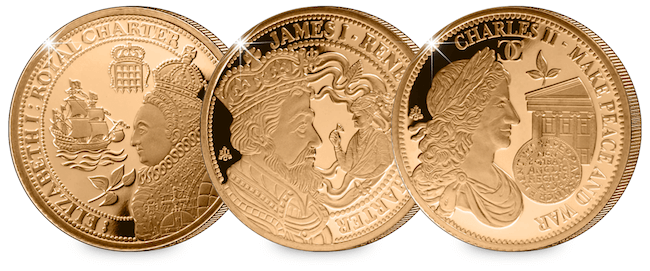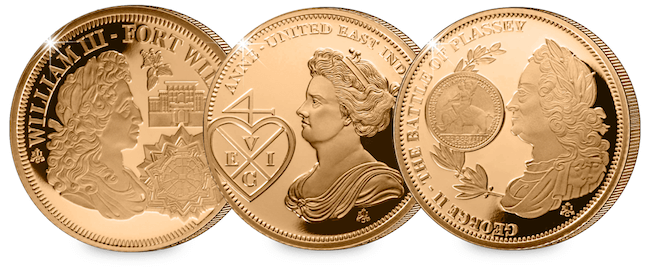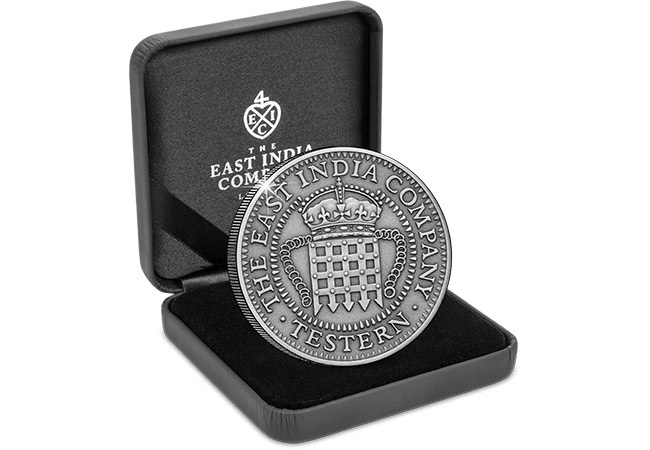Uncategorized
Why this year’s official Poppy coin is one of the most poignant yet…
The official new Poppy Coin has just been issued in support of The Royal British Legion and this year the design features the stylised poppy that’s synonymous with the Legion with particularly poignant wording from the ‘Ode of Remembrance’.
I caught up with designer Christopher Lloyd to ask him about the story behind his design:

Christopher Lloyd, designer of the Official Poppy Coin 2017
“As the coin is the only official coin to support The Royal British Legion, the most important part of the coin had to be the Legion’s stylised poppy. I wanted to make this the centrepiece of the coin so decided to highlight the poppy in full colour.”
“The brief this year was to use the wording from Laurence Binyon’s famous poem ‘For the Fallen’ which was written during the First World War. I felt the words ‘We Will Remember Them’ were particularly poignant, especially as it forms part of the ‘Ode of Remembrance’ which is recited at remembrance services across the world, so I gave these special words the same red highlighting as the poppy itself to make it really stand out”.

2017 Remembrance Poppy Coin Design Sketches
“It has been an honour to design the 2017 Poppy coin and I hope it helps to support the important work of The Royal British Legion.”
A coin for every collection
A whole range of different coin specifications are to be struck, meaning there is a coin for every collection. From a special Proof quality cupro-nickel £5 coin – right up to an astonishing 5oz Gold edition, the new Poppy Coin is undoubtedly a moving tribute for Remembrance Day and it’s certainly one of my favourites.
Officially issued in support of The Royal British Legion
To support the work of The Royal British Legion, The Westminster Collection have organised for a donation from the sale of each coin to go directly to the charity, helping them to continue to provide financial, social and emotional support to all who have served and are currently serving in the British Armed Forces and their families.
If you’re interested…
The 2017 Remembrance Gold-Plated Proof £5 Poppy Coin is available now.
Click here for more details and to add one to your collection today…
A donation from the sale of each coin will go directly to The Royal British Legion.
The story behind England’s first colonial coinage…
The story behind England’s first colonial coinage is one that few people know about. It begins with the most influential company in world history – The East India Company…
The East India Company today are producers and distributors of quality, exclusive and exotic goods with a 400 year legacy through its trade history, which built the British Empire.
Originally, the East India Company was a band of pioneering merchants who were granted a Royal Charter by Elizabeth I in 1600 to explore the East Indies and bring back exotic goods to the Regal West. In doing so they established new trade routes and broke down the barriers of the world. They established Singapore and Hong Kong, held Napoleon captive in St. Helena and sent the tea that was destroyed at the Boston Tea Party.
The consequences of the Company’s actions are the very fabric of our Commonwealth.

Queen Elizabeth I
England’s very first colonial coinage – struck for the company’s first voyage
In 1601, Queen Elizabeth I signed a Royal Charter awarding The East India Company the right to monopoly on trade in the East.
On signing the Royal Charter, Queen Elizabeth I instructed The Royal Mint to strike England’s very first colonial coinage – the Testern coin. Struck specifically for The Company’s first voyage to the East, the Testern was the very first currency that was minted specifically for trade outside of England.
Following the defeat of Spain in the Spanish Armada in 1588 and after the death of Prince Philip of Spain, the British colonial era of empire commenced and the start of 270 years of trade and conquest began.

The Originial Testern Coin
It’s believed that Queen Elizabeth I insisted on her own trade coinage as means of demonstrating that she was just as powerful as the King of Spain, which would only be effective if it was based on the prevailing international trade coin of the time – the Spanish Real. So, she introduced a coin that was minted in the exact same specification as the Spanish 8 Real denomination, commonly known as ‘Pieces of Eight’. This coin was formally named the Testern but came to be known as ‘Portcullis Money’ due to its unique Portcullis design.
The end of the Testern
Elizabeth I insisted that The East India Company carried the new Testern coins on each voyage, as means of exhibiting her power overseas. Just over £6,000 worth of ‘Portcullis Money’ was loaded onto the vessels of Sir James Lancaster VI’s fleet – the first fleet of The Company. When the fleet arrived in the East many of the coins were melted down, and very few returned to England. In fact, those that did were presented to The Company’s shareholders.
A coin found only in museums

The 2017 Silver Testern Coin
Today, you will only find these coins in museums and even then only a very small number of the Testern ‘Portcullis Money’ coins will be exhibited across the world.
This year, The East India Company and St Helena government have issued the Testern coin in Silver featuring a design based on the original ‘Portcullis money’ and struck in the same weight specification as the Testern coins. Only the second ever minting of Portcullis Money, the design features the iconic portcullis engraving just as its 1601 predecessor.
If you’re interested…
Fully approved by Her Majesty Queen Elizabeth II and strictly limited to just 10,000 coins worldwide, you can own the 2017 Testern Silver coin today if you’re quick.
Why these 9 gold coins tell a story that changed the world…
This year, a unique set of nine pure gold coins has been released to mark the prestigious heritage of the East India Company, still trading after 417 years.

The Empire Collection
At its peak the British company single-handedly accounted for half the world’s trade. They minted their own currency, started the mass production of tea for export in India and transformed dining tables in the West forever by introducing new exotic ingredients and flavours.
But despite the Company ceasing operations in 1874, it had changed the way the world traded. The Times commented ‘It accomplished a work such as in the whole history of the human race no other trading Company ever attempted, and such as none, surely, is likely to attempt in the years to come.’
Just 500 gold coin sets issued to mark this history

All nine 24-carat gold coins
Now The East India Company has issued The Empire Collection, a brand new, limited edition set of nine 24-carat gold coins which tell the story of the company from its foundation in 1600.
Each coin features a depiction of a British monarch who ruled during the Company’s first period of operations – from Queen Elizabeth I to Queen Victoria –alongside a key historic symbol.
Only 500 sets will ever be struck, making each of these coins immediately scarce in comparison to say, the Gold Sovereign, of which 10,500 will be issued this year.
Nine British Monarchs – Nine Gold Coins

Coins from left: Elizabeth I, James I and Charles II
The first three coins of the collection honour Elizabeth I, James I and Charles II. They feature symbols influenced by the Red Dragon (one of the East India Company’s ships), the rare Rose Ryal coins, and the charters granted by Charles II.

Coins from left: William III, Queen Anne and George II
The next three coins mark the reigns of William III, Queen Anne and George II and make symbolic reference to Fort William, the main garrison for the British in Calcutta, the Company ‘balemark’ (the heart shape used as a trademark for all Company goods) and the design of the 1758 shilling.

Coins from left: George III, William IV and Queen Victoria.
The final three coins pay tribute to George III, William IV and Queen Victoria. The George III coins pictures the famous ‘Spade Guinea’, whilst the William IV coin depicts the beading and lettering used on the Mohur – the Company’s own currency. Queen Victoria’s coin is graced by a Crown containing a precious jewel set by the East India Company, marking when Victoria became Empress of India.
Finished to an exceptionally high standard in a numbered luxury Presentation Case decorated with brass highlights, the collection truly represents the global resonance of The East India Company. With just 500 available The Empire Collection is one of the most impressive gold coin sets you are likely to see, and it is bound to become a future collector priority.
If you’re interested…
You can now own the Empire Collection, but with such a tiny edition limit, it won’t be available for long. Sign up below if you’d like to be contacted about owning this impressive gold coin set:



